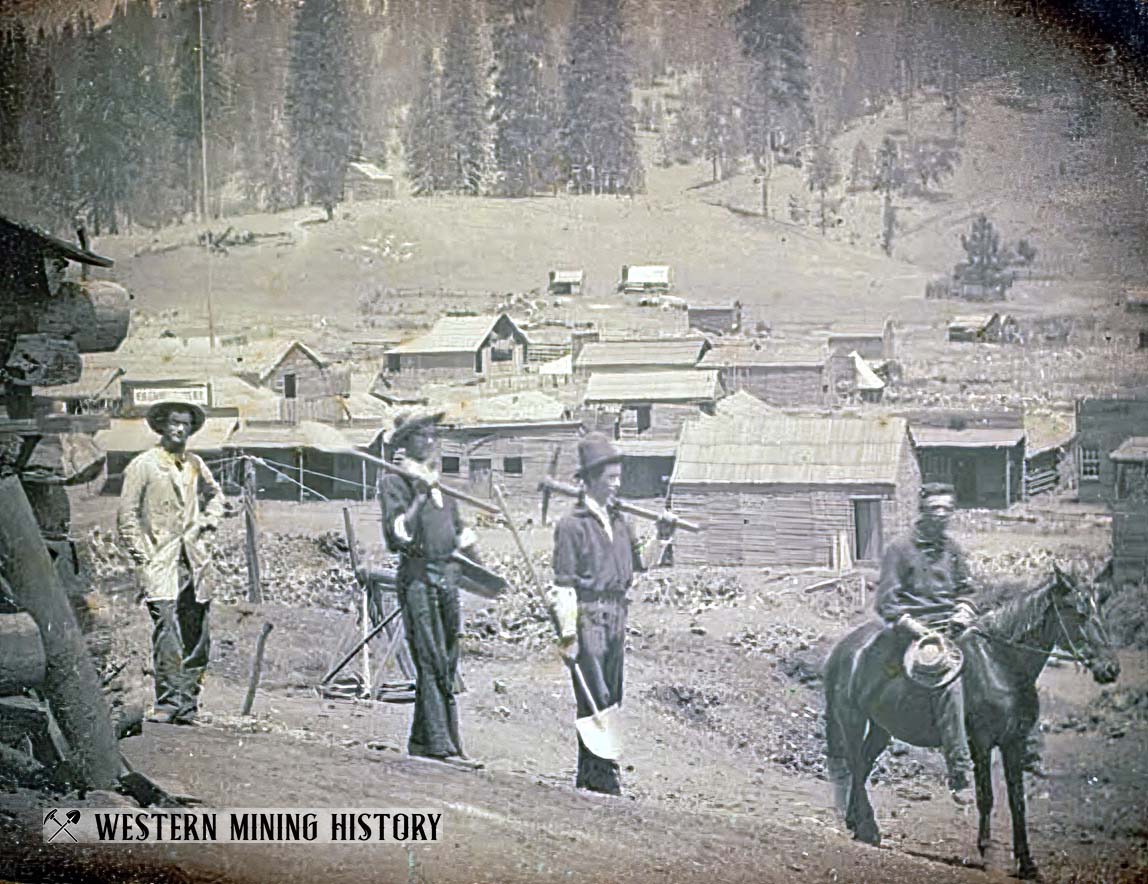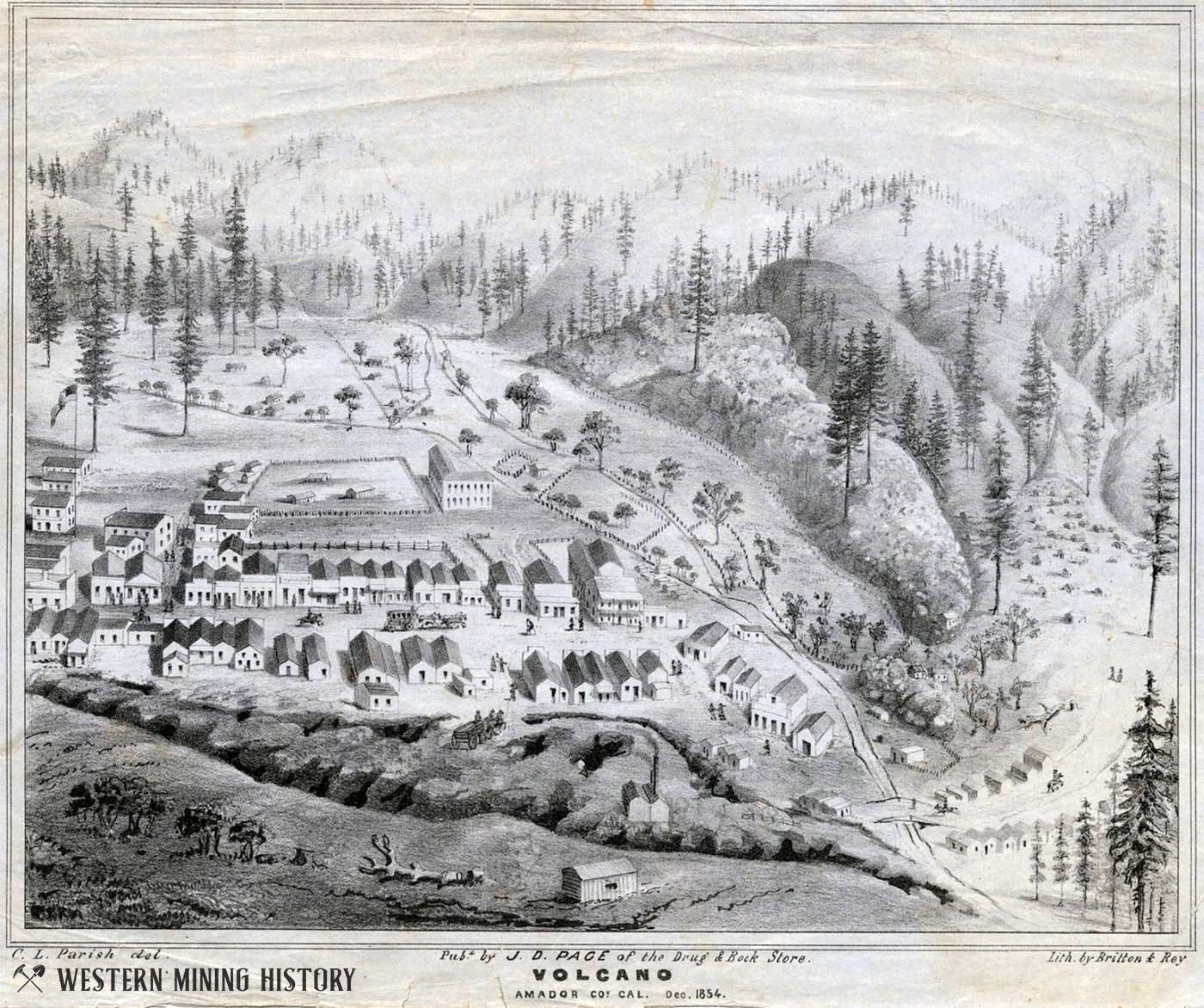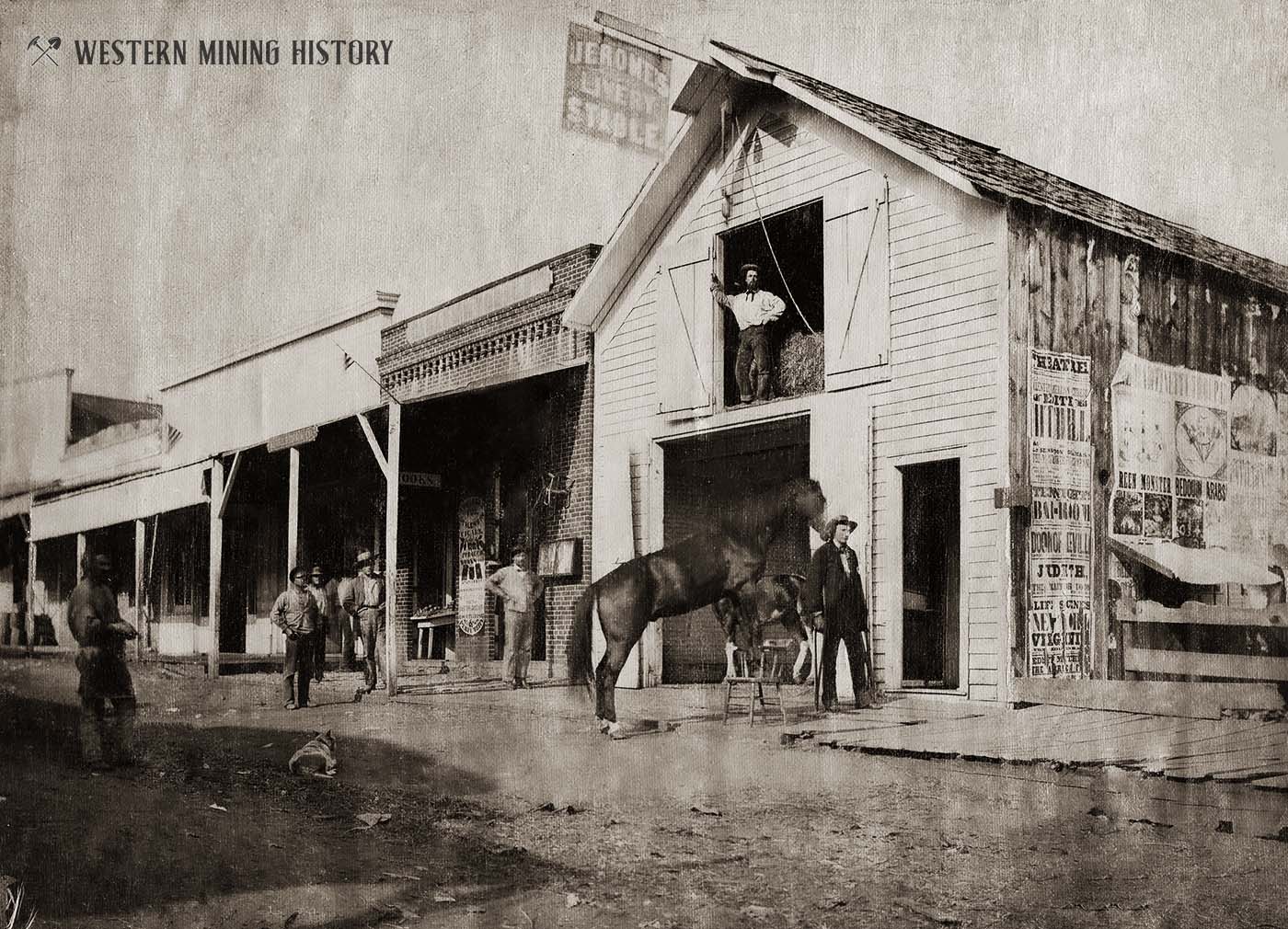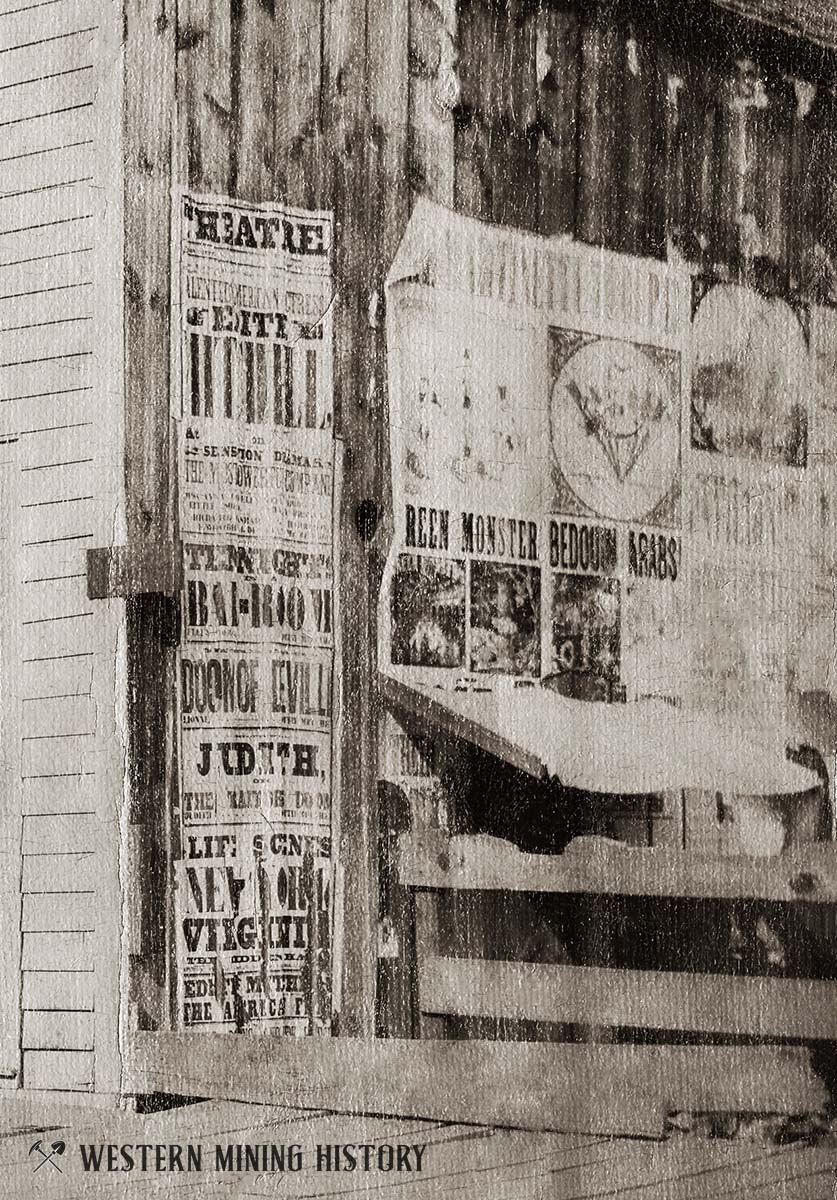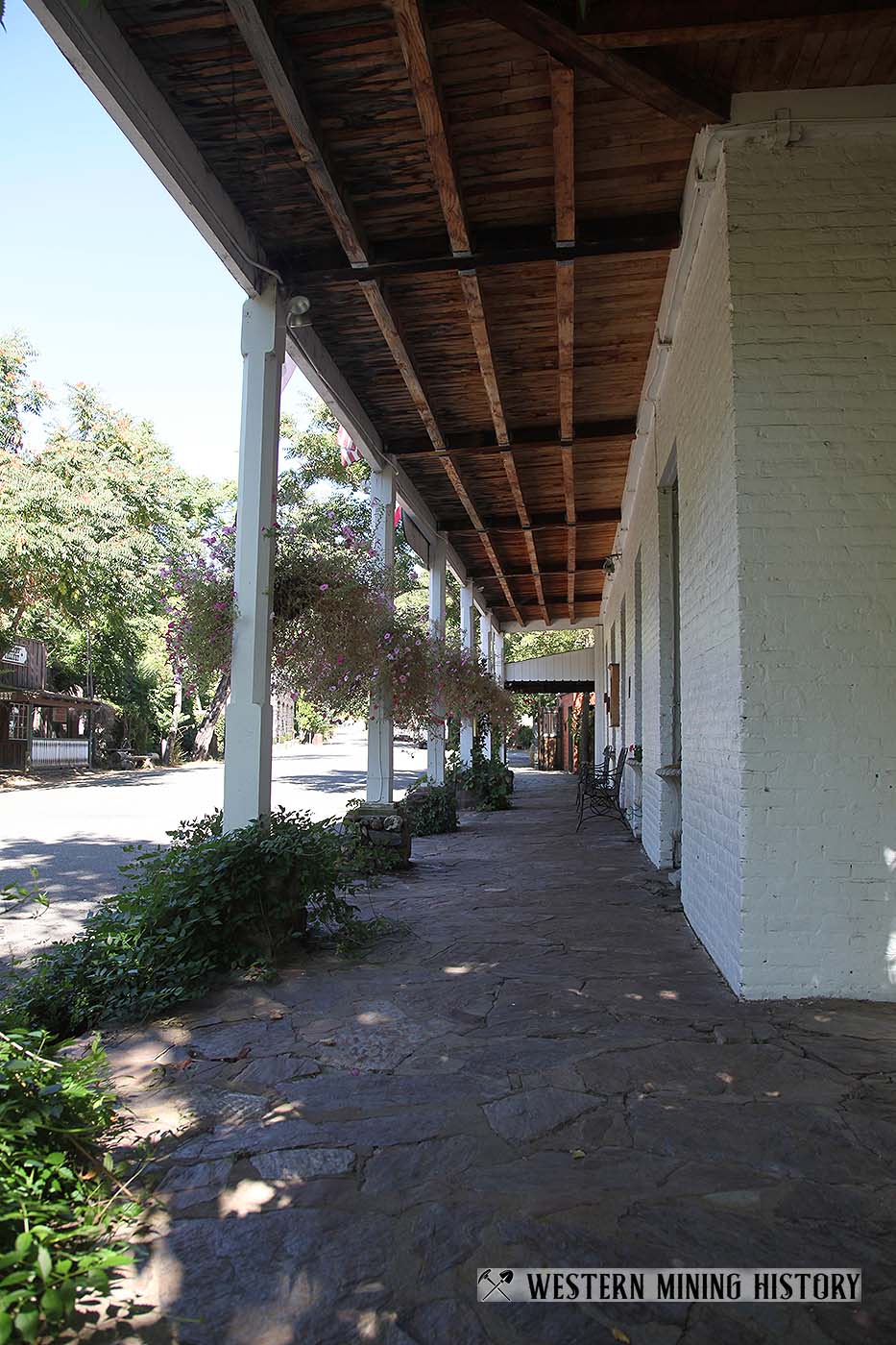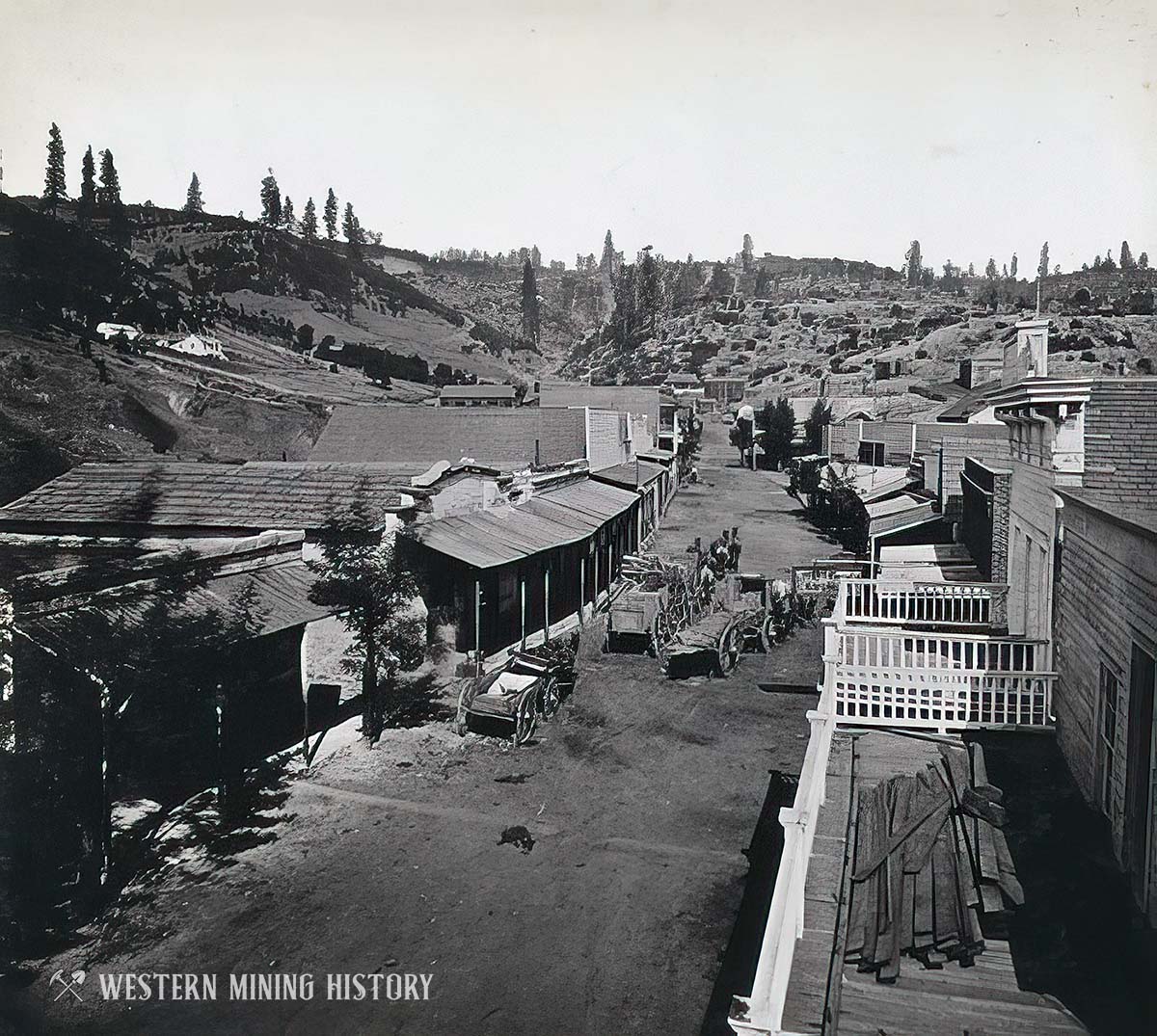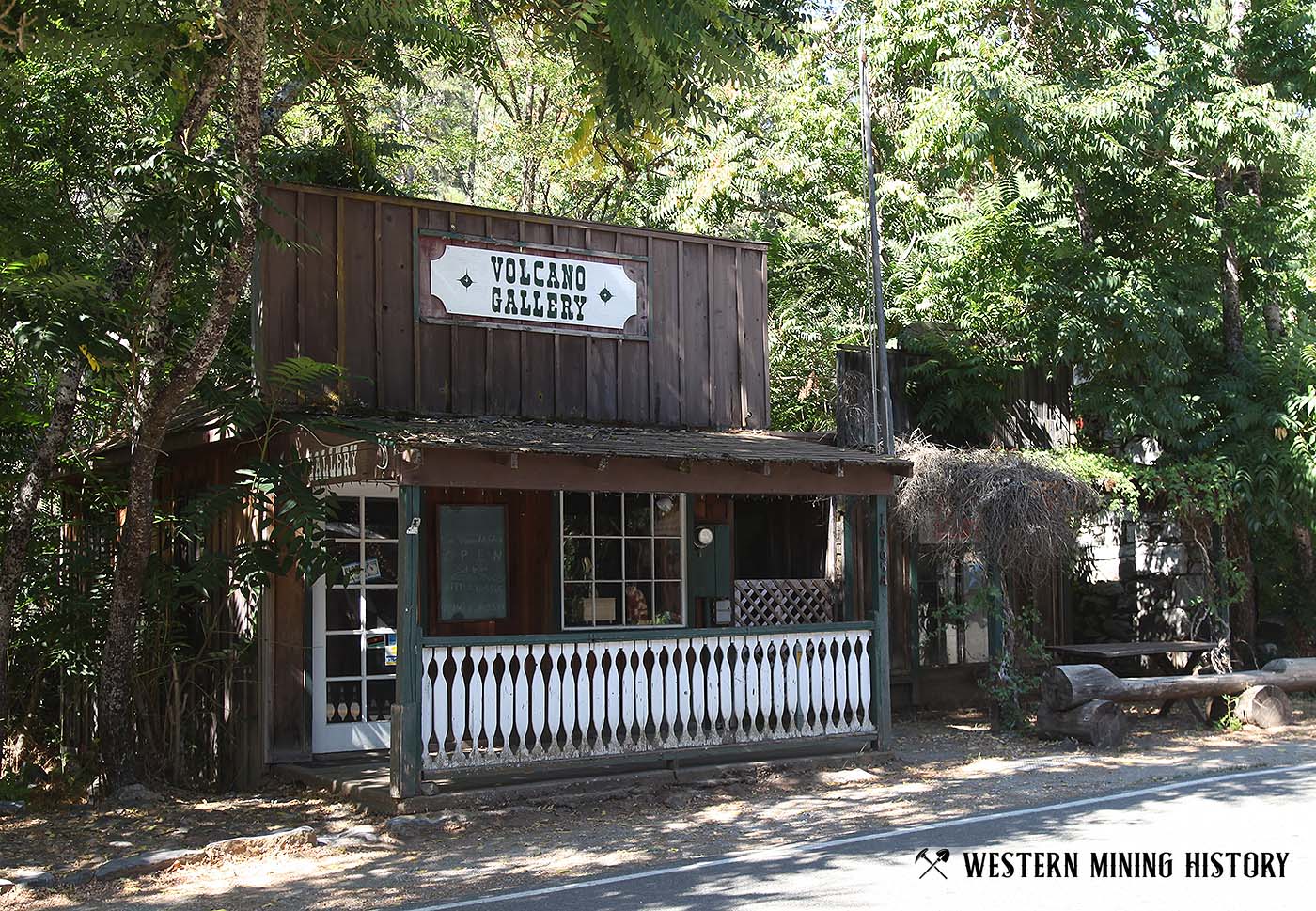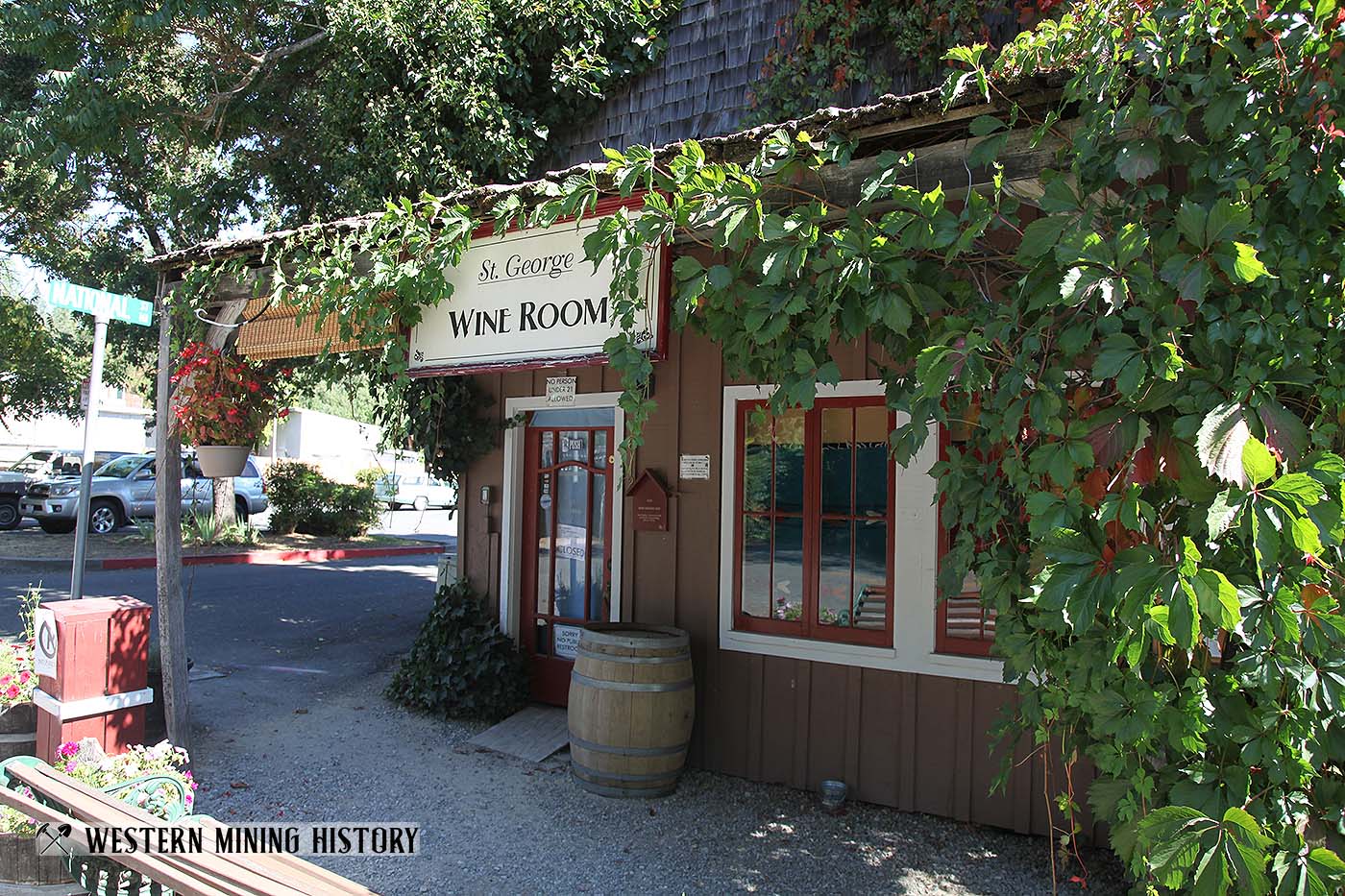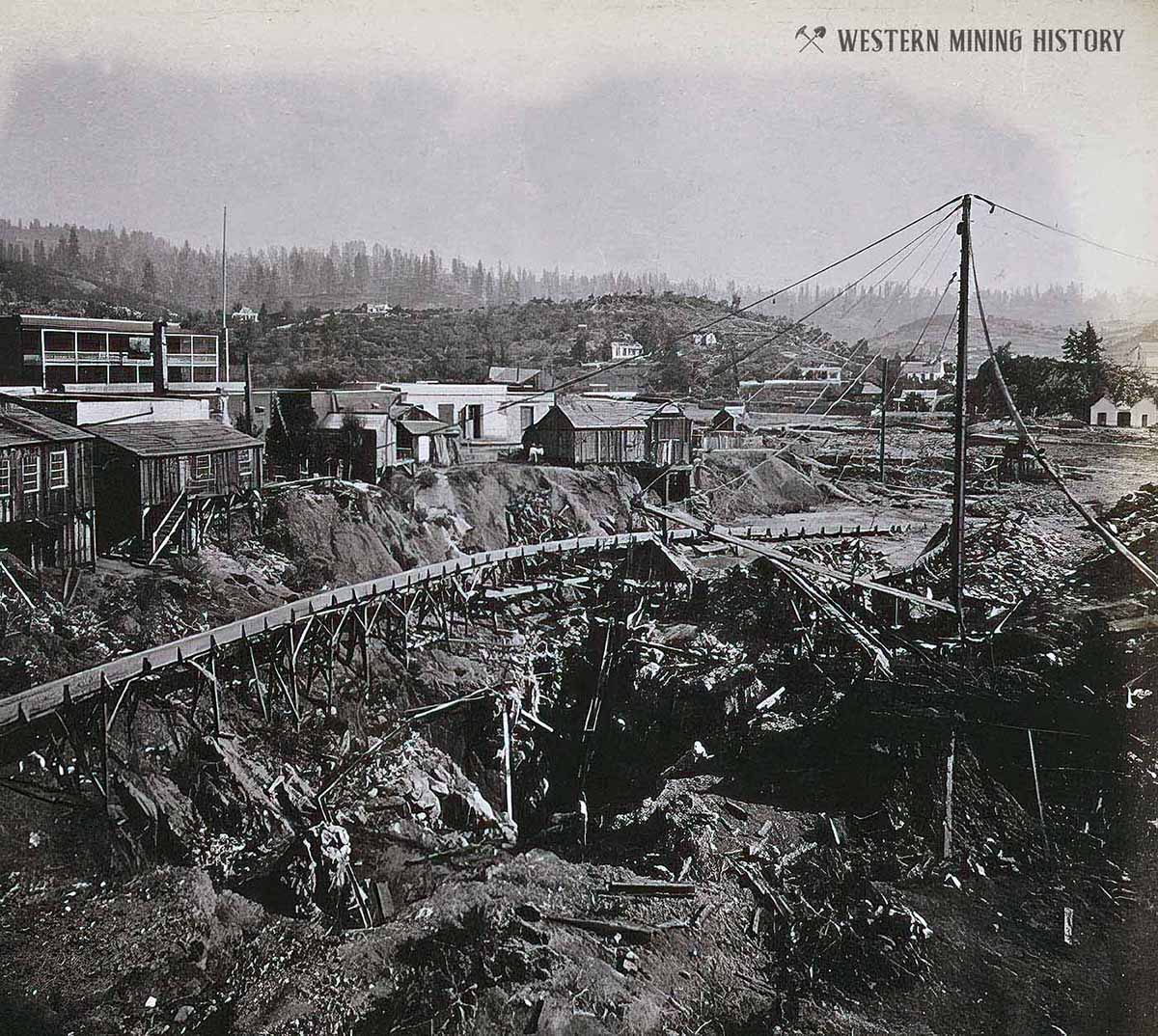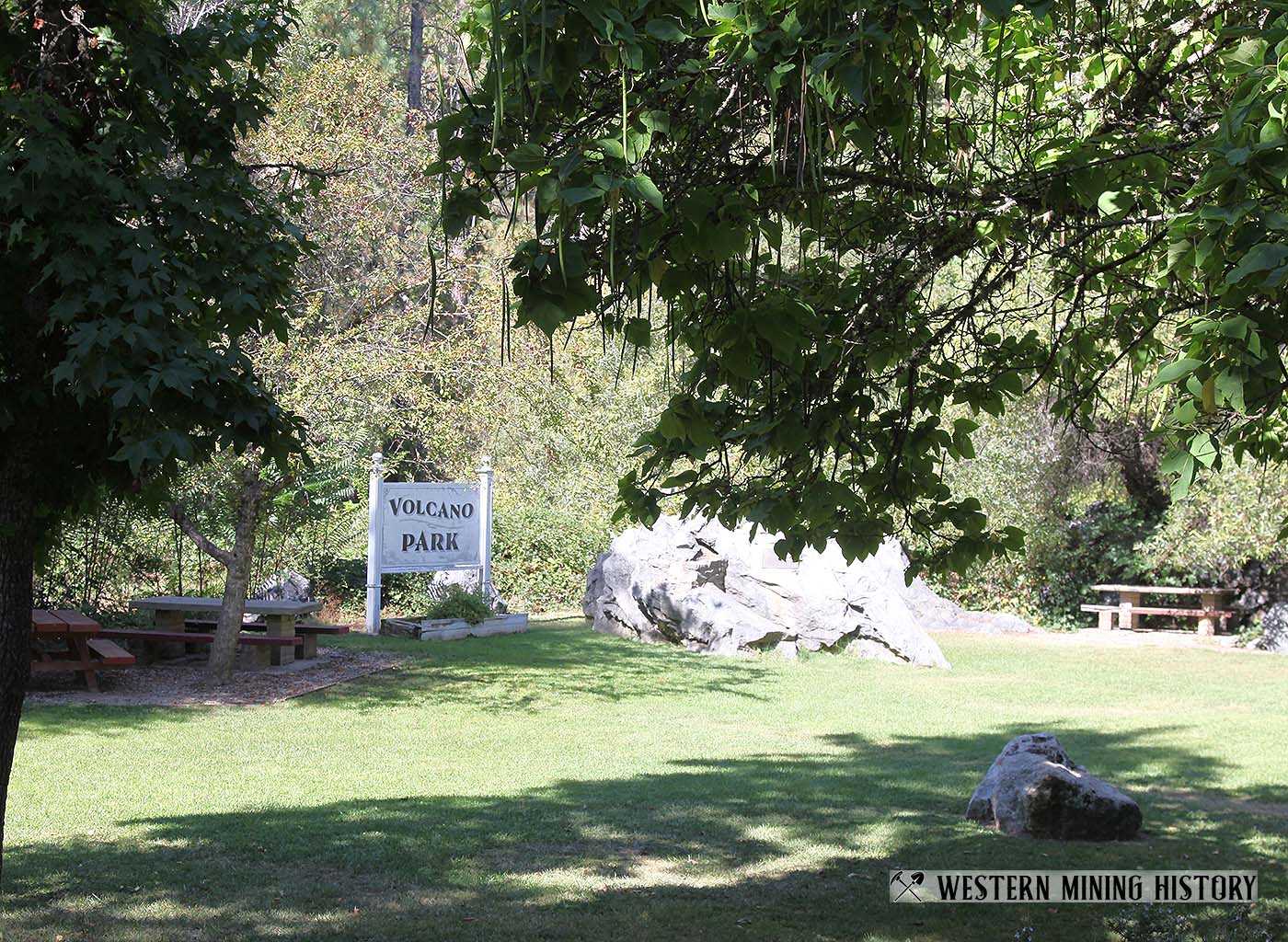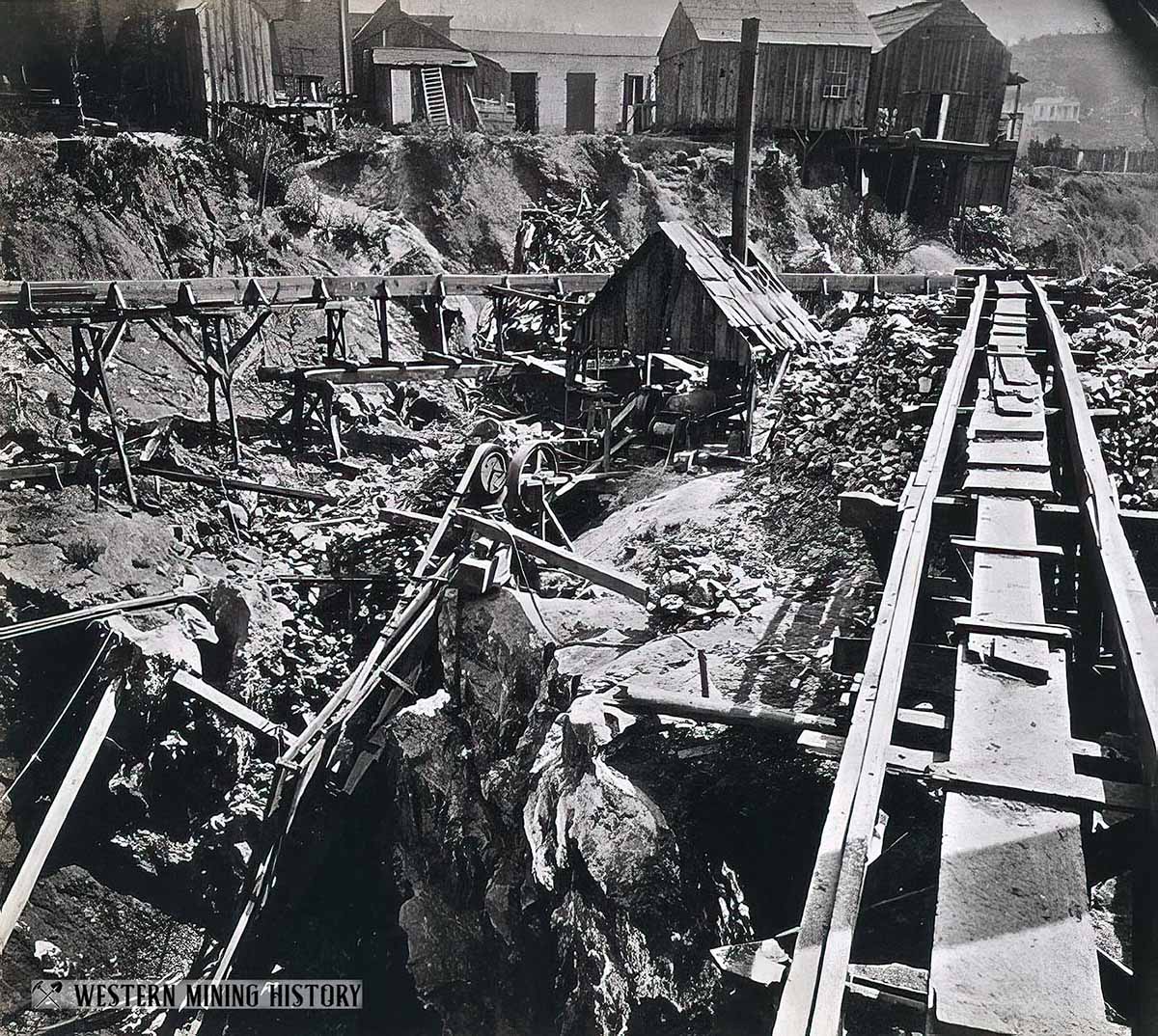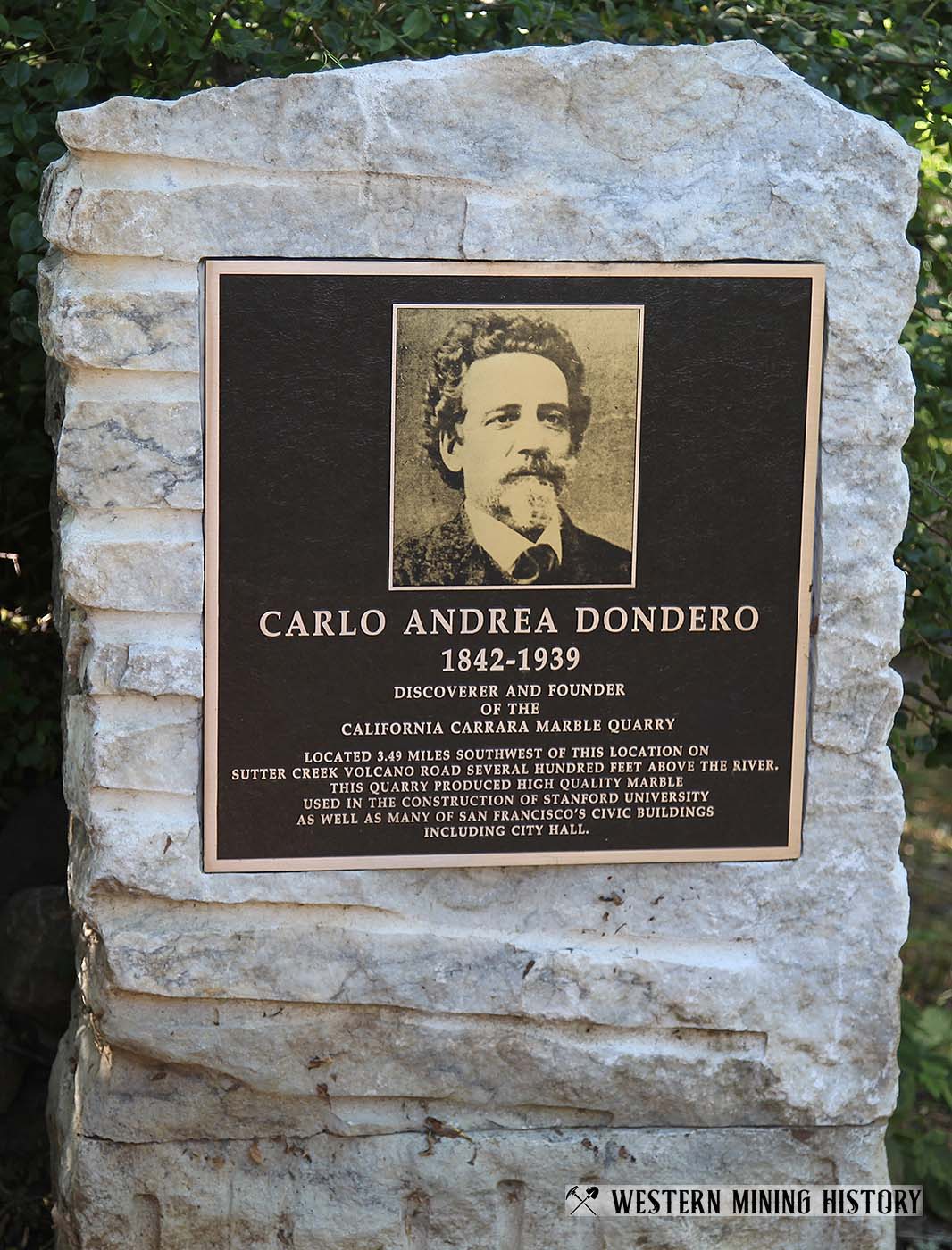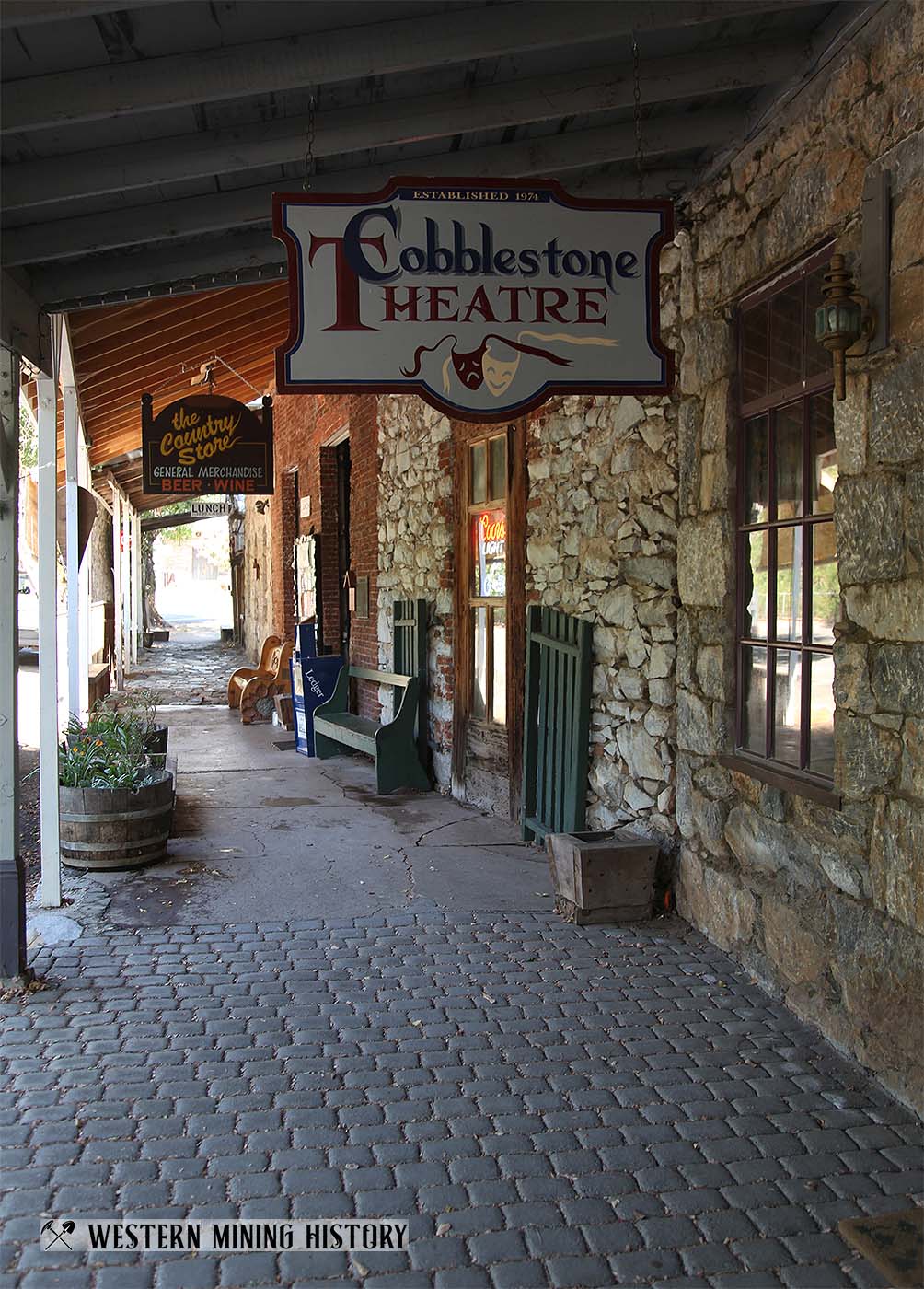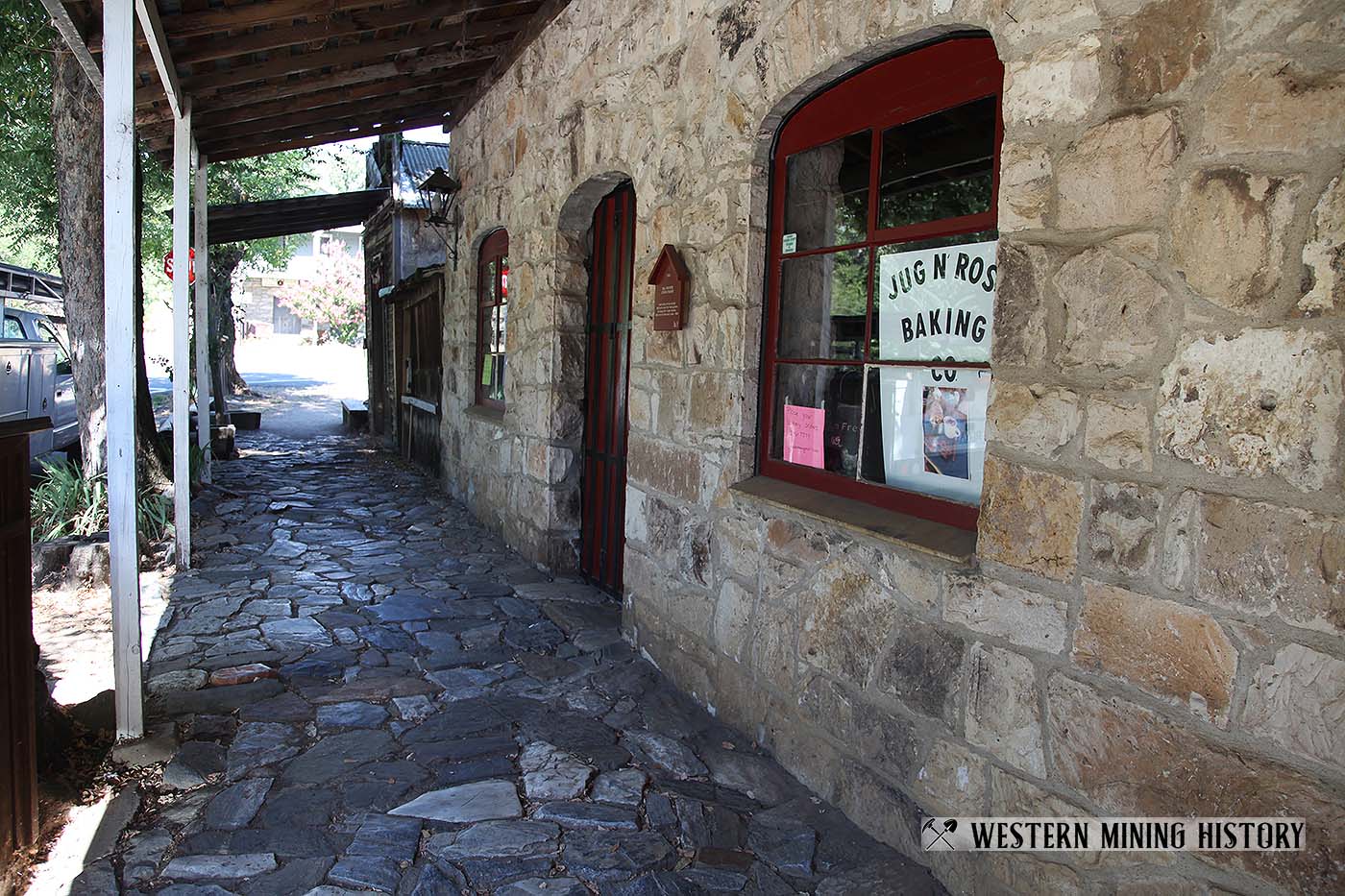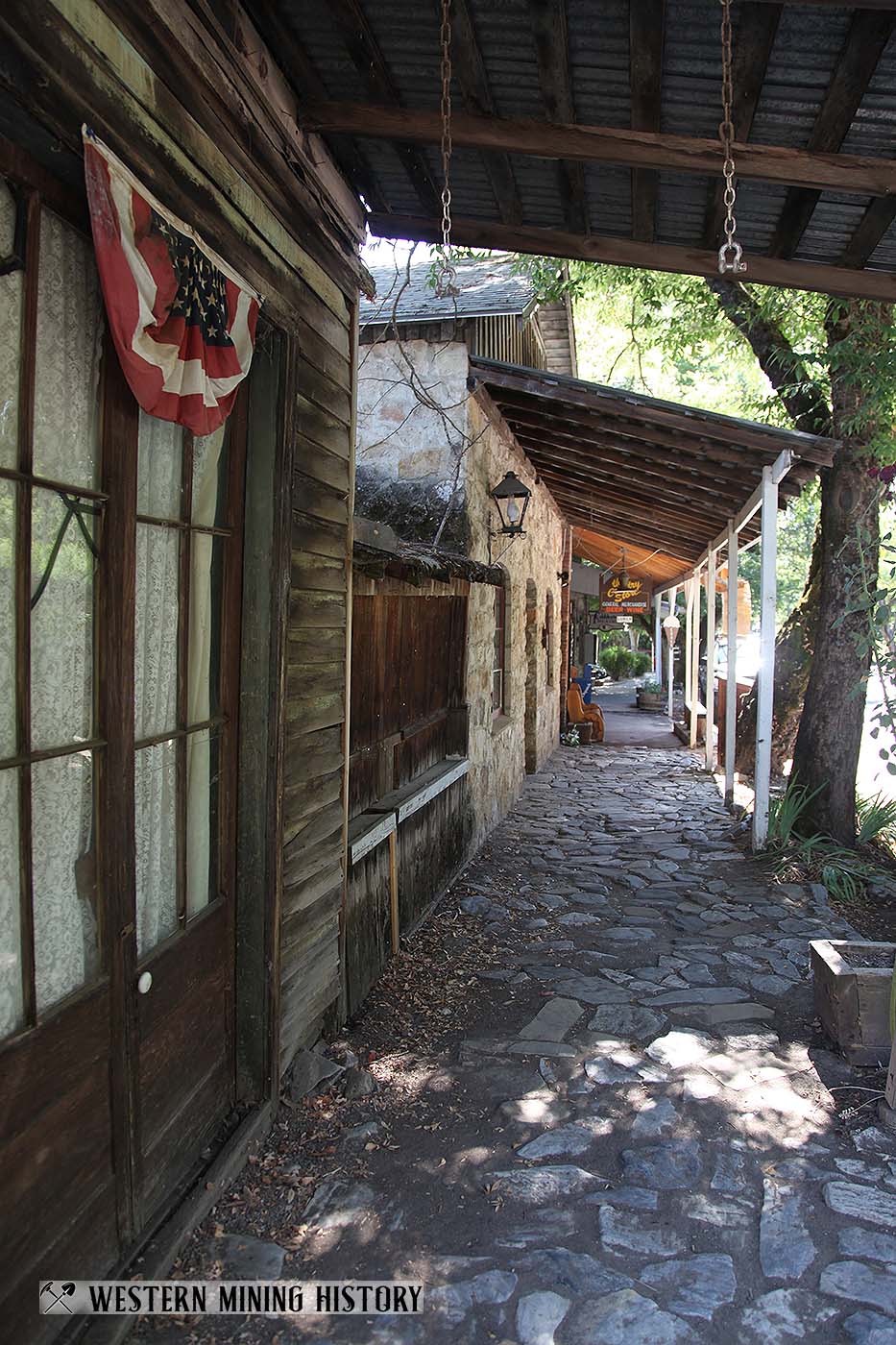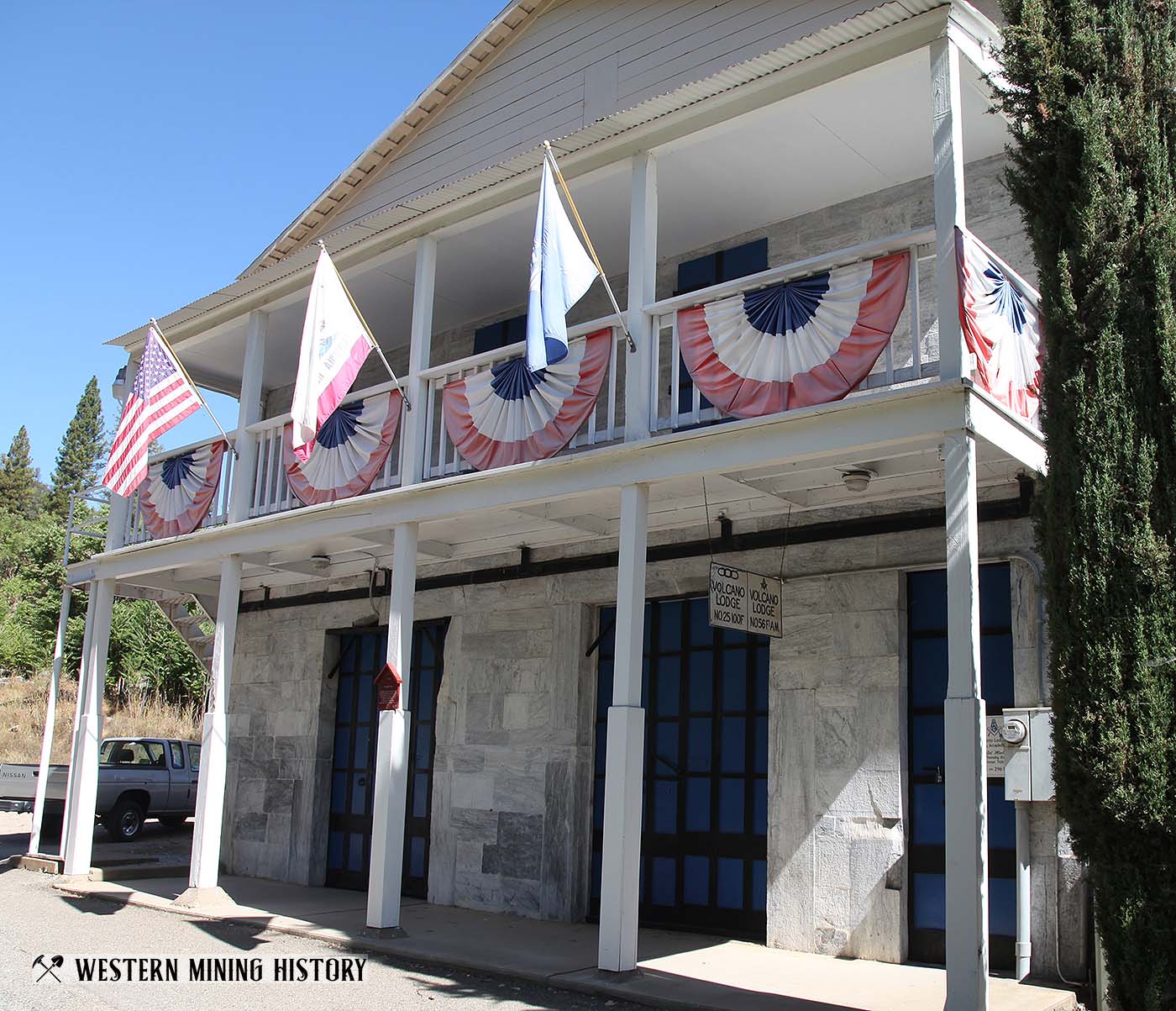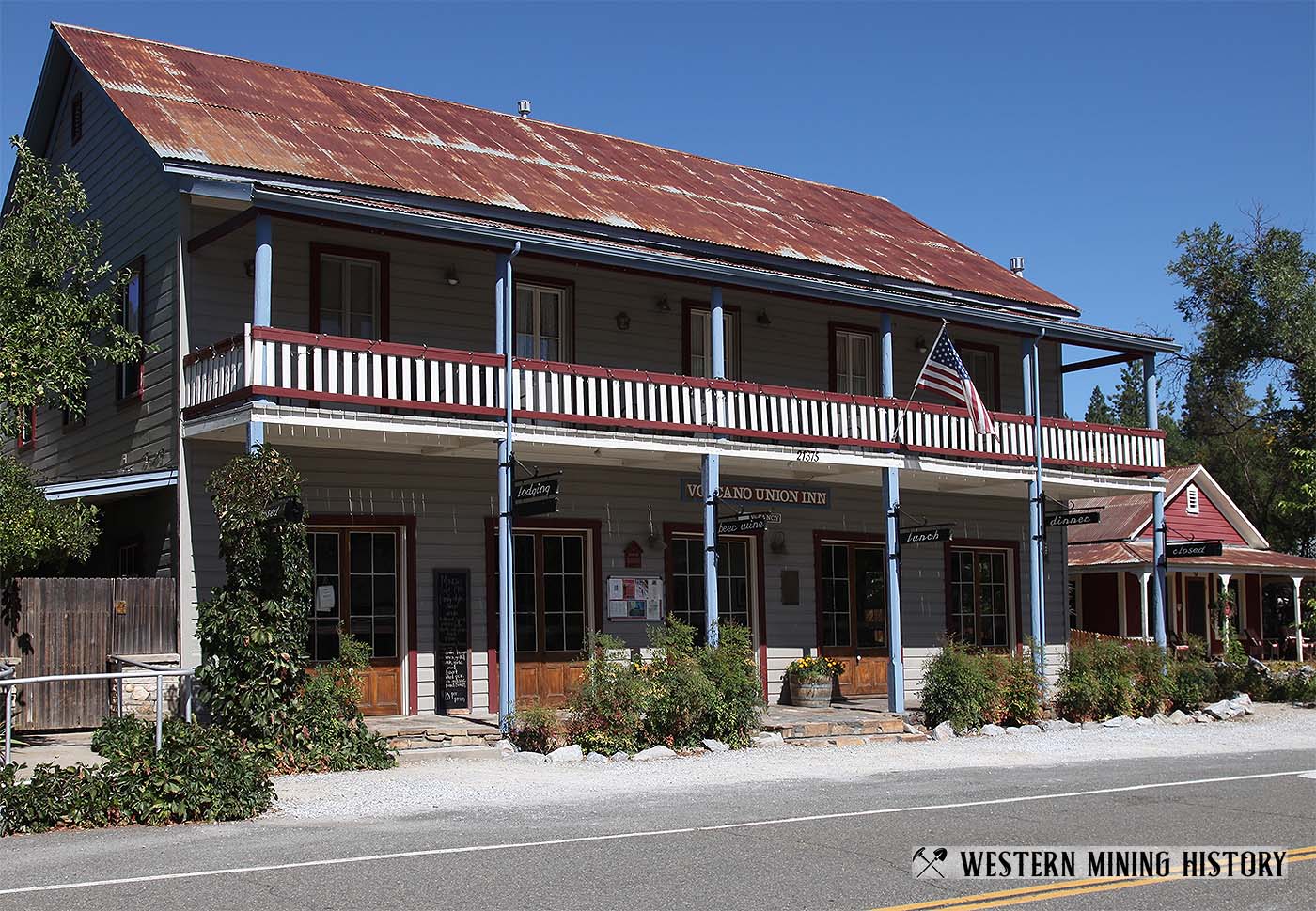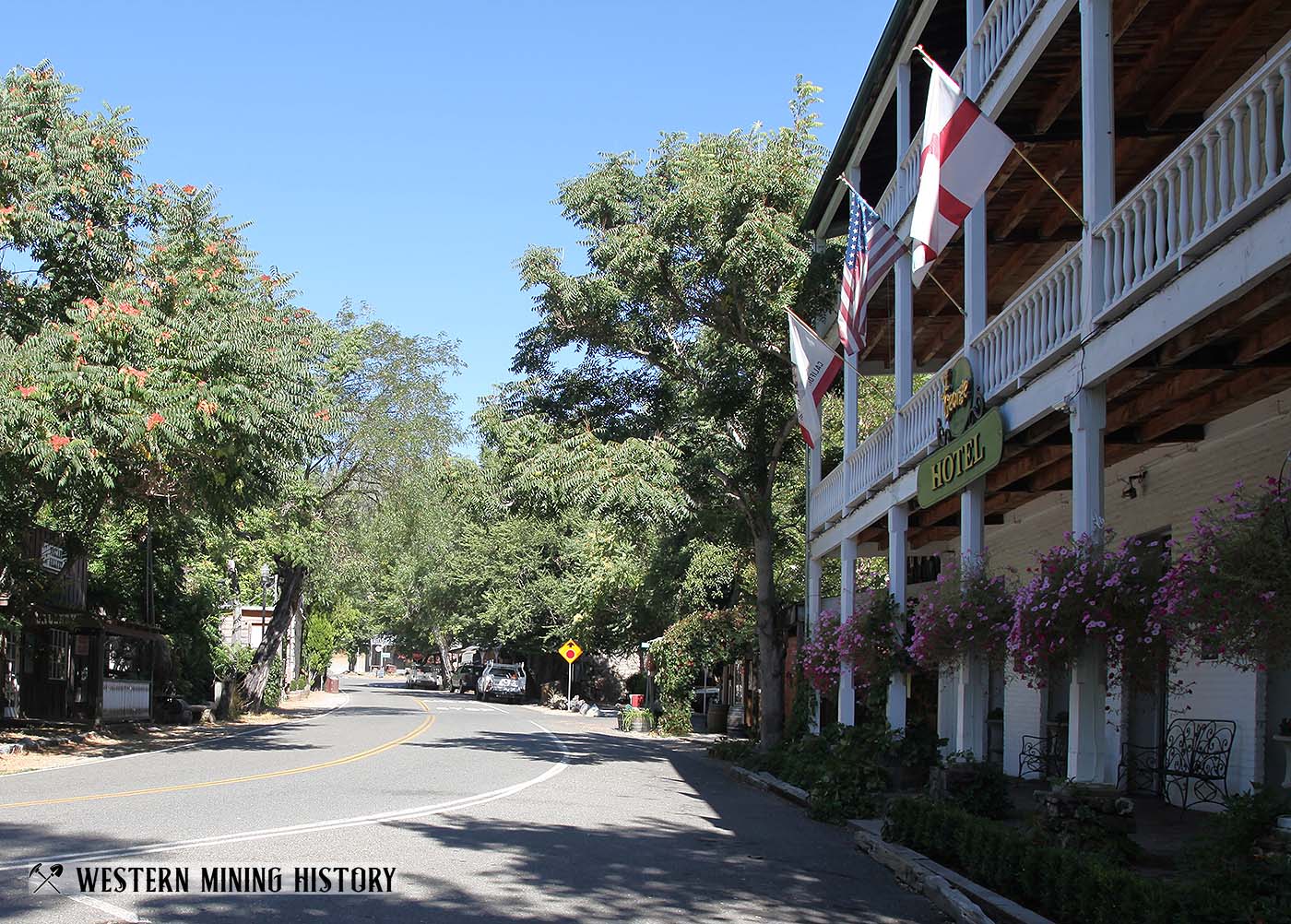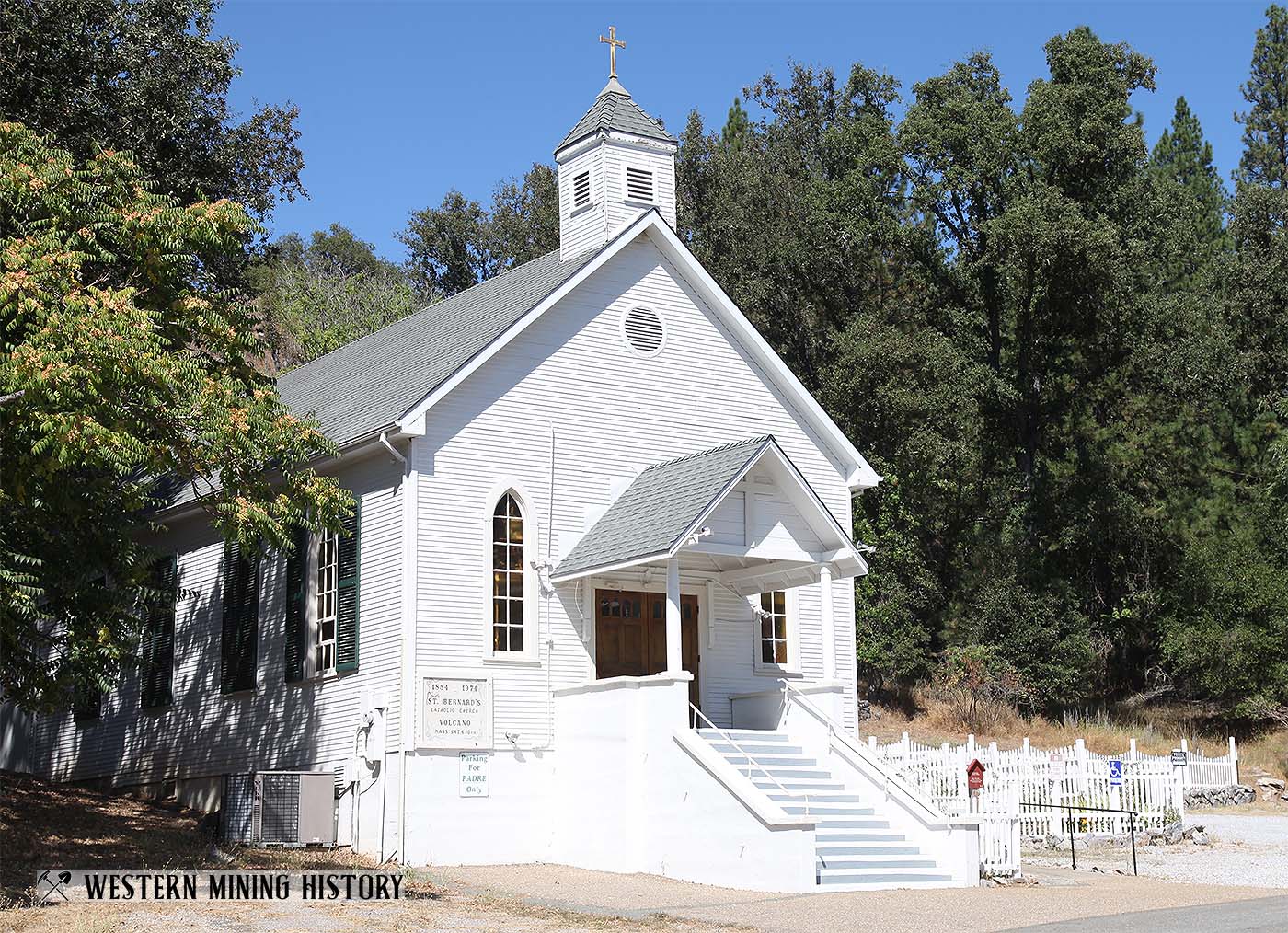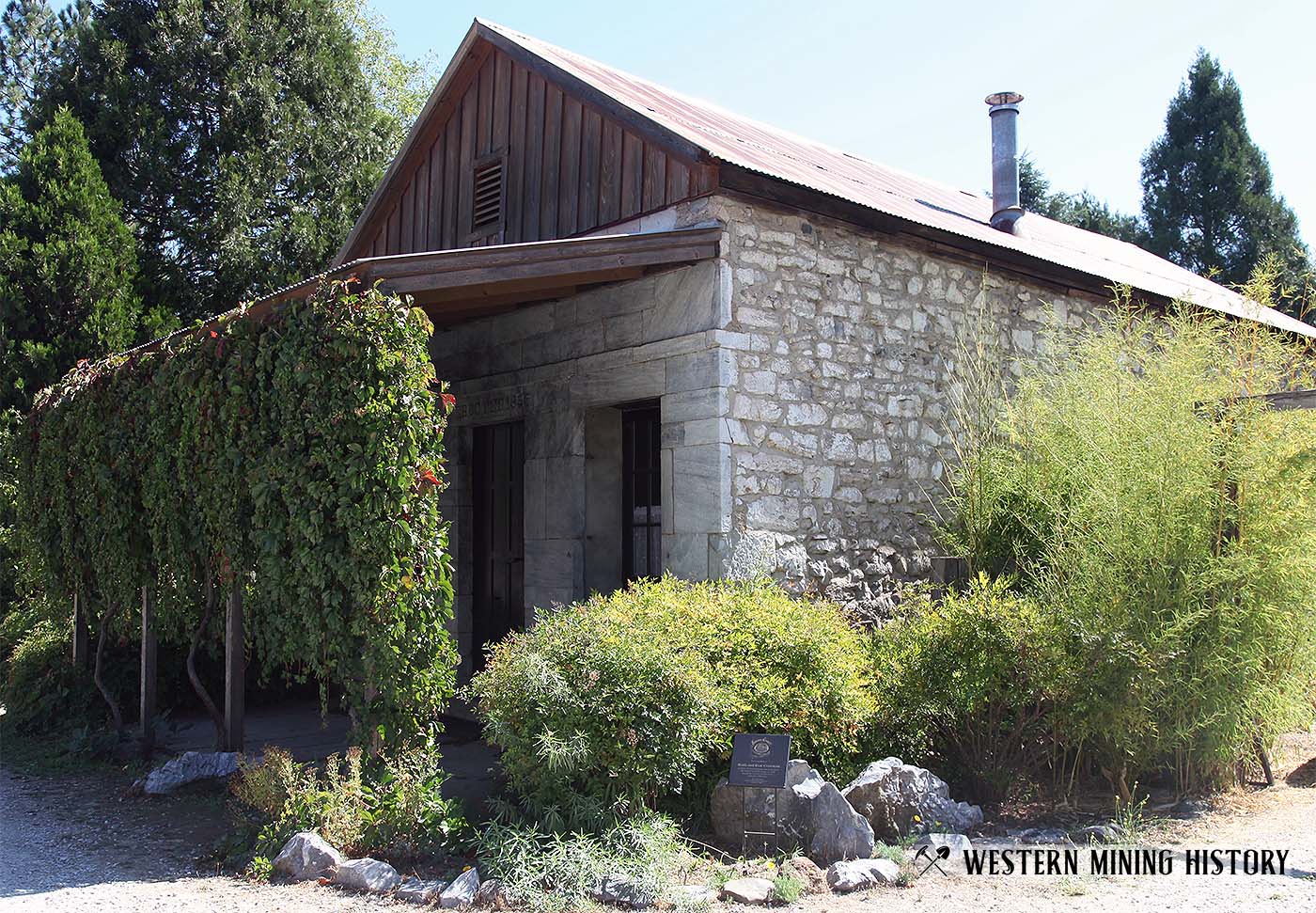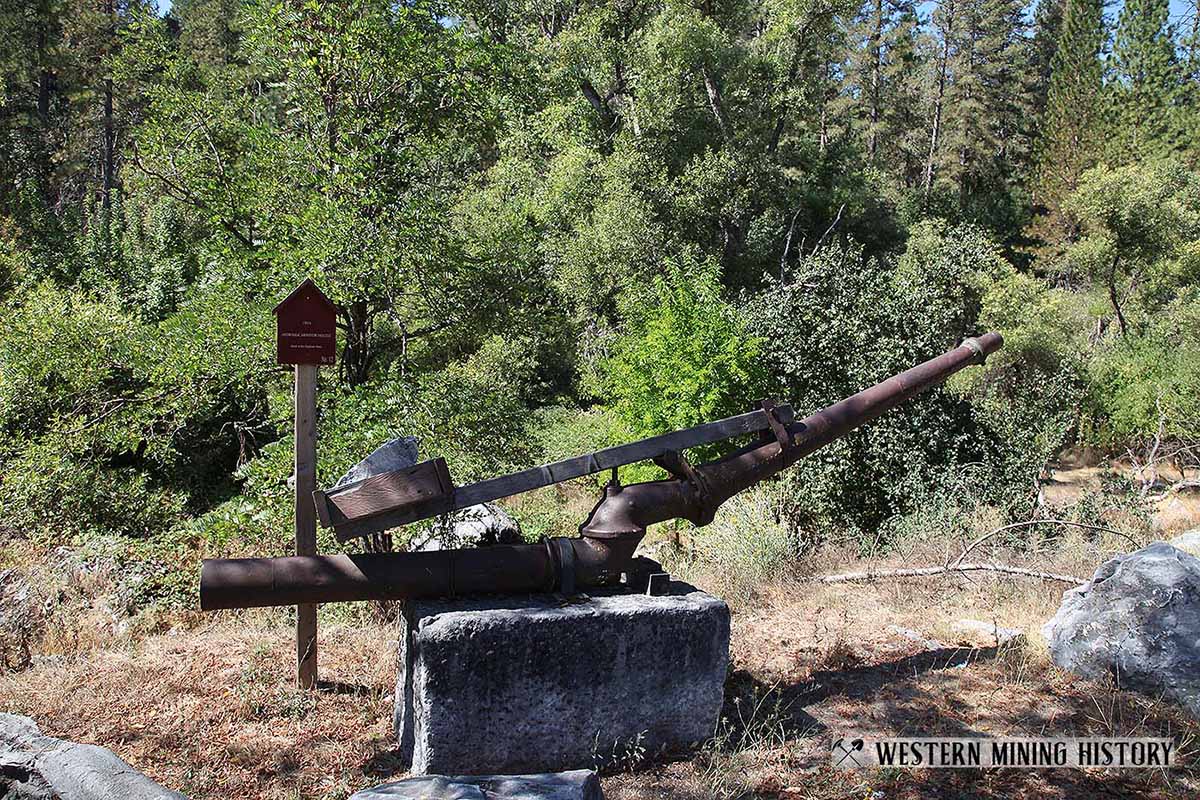Click on an image to get more details or a direct link.
Closer view of the merchant's sign and goods
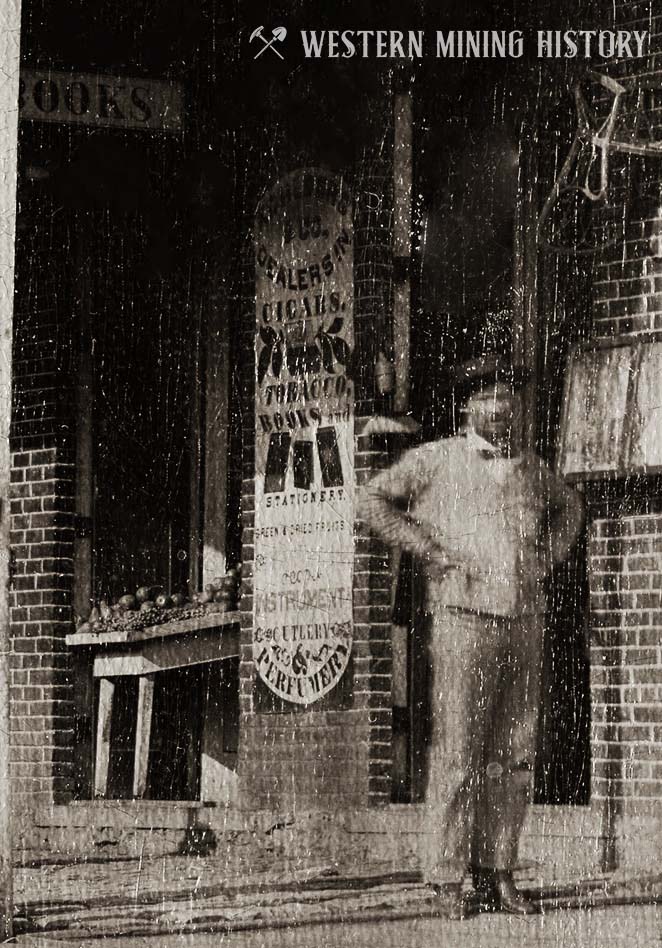
This closer look at the ca. 1855 photo of businesses in Volcano, California shows the sign at a goods store. The name of the store is illegible, but the rest of the sign reads "dealers in cigars, tobacco, books and stationary, fresh & dried fruits, cutlery & perfumery". The table has fresh pears, apples, and grapes on display.
Clute Building - Volcano, California
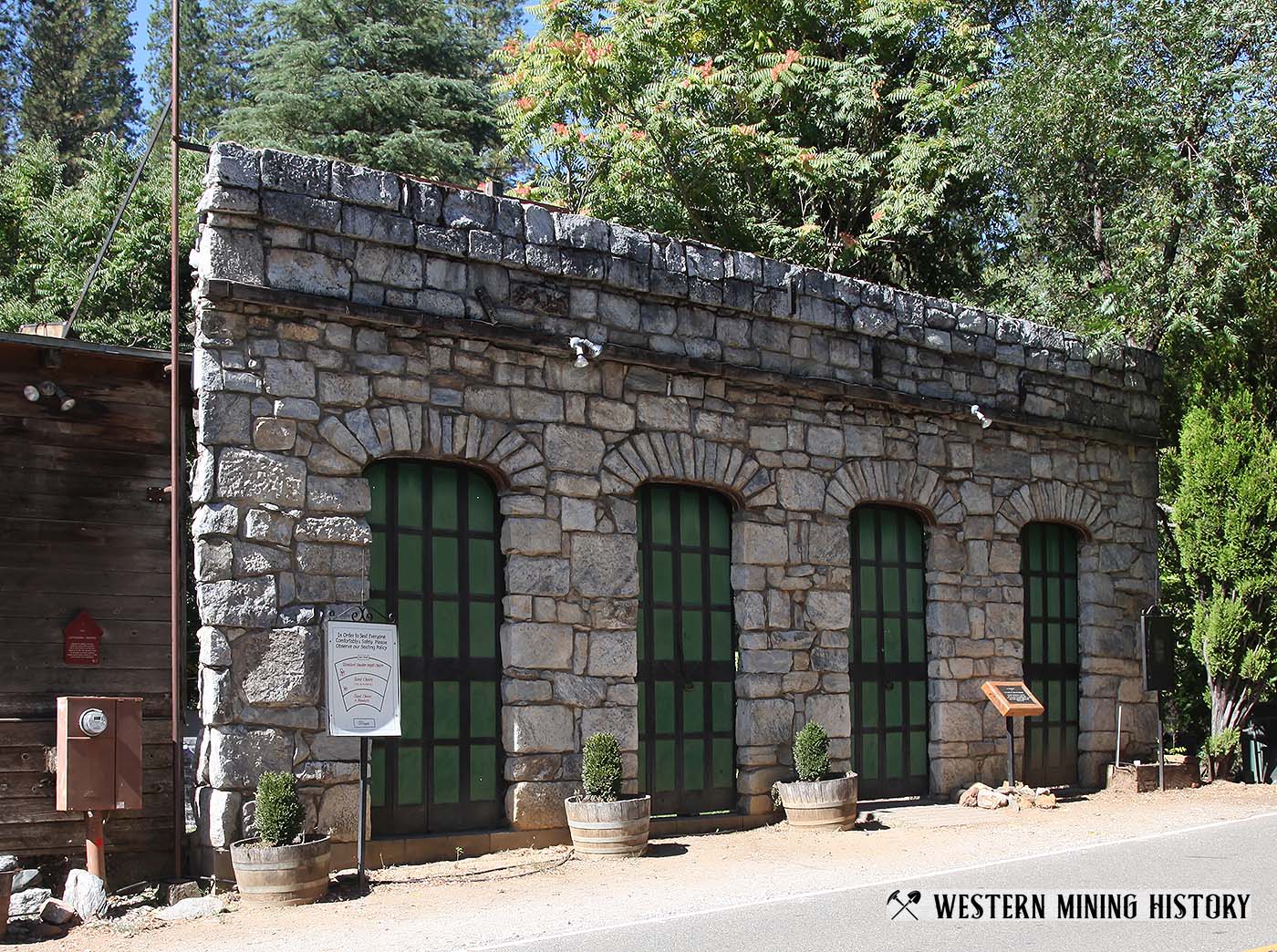
Sign reads:
1855. Clute Building - Limestone.
Originally one building on two lots, divided by partition, with two owners. Sash & Door Factory on one side and a saloon on the other. The basement housed the first public law school in California. Acquired by the Volcano Theater Co. in 1980 - now the facade for the amphitheater.
General Store - Volcano, California
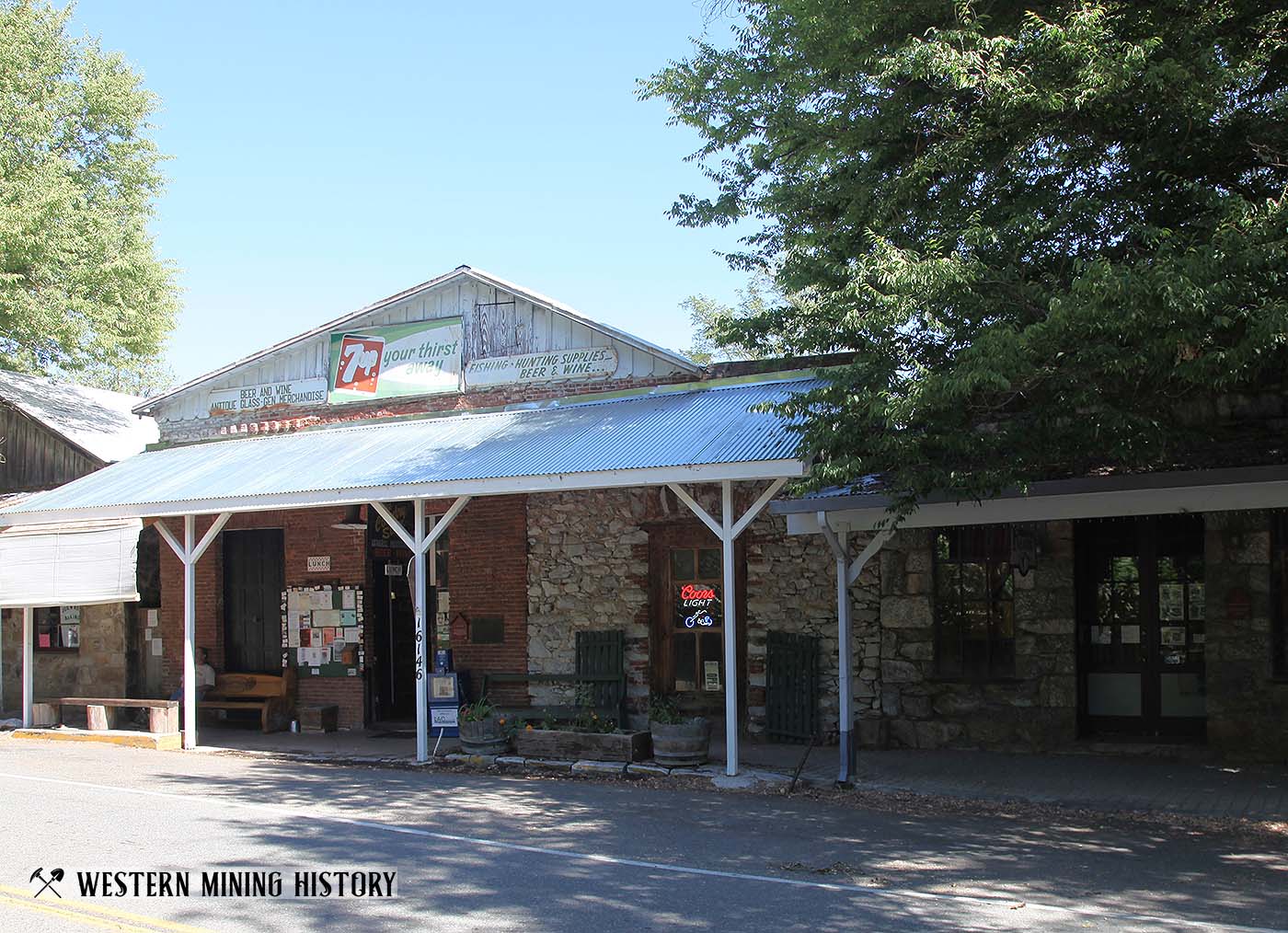
Sign reads:
General Store.
Oldest continuously operated store in California - since 1852. Originally two stores, Sacramento (left) and Burlesconi's (right). Purchased in late 1860's by Luca Cassinelli for $1,700 in gold coins. Cassinelli Family owned until 1956.
St George Hotel - Volcano
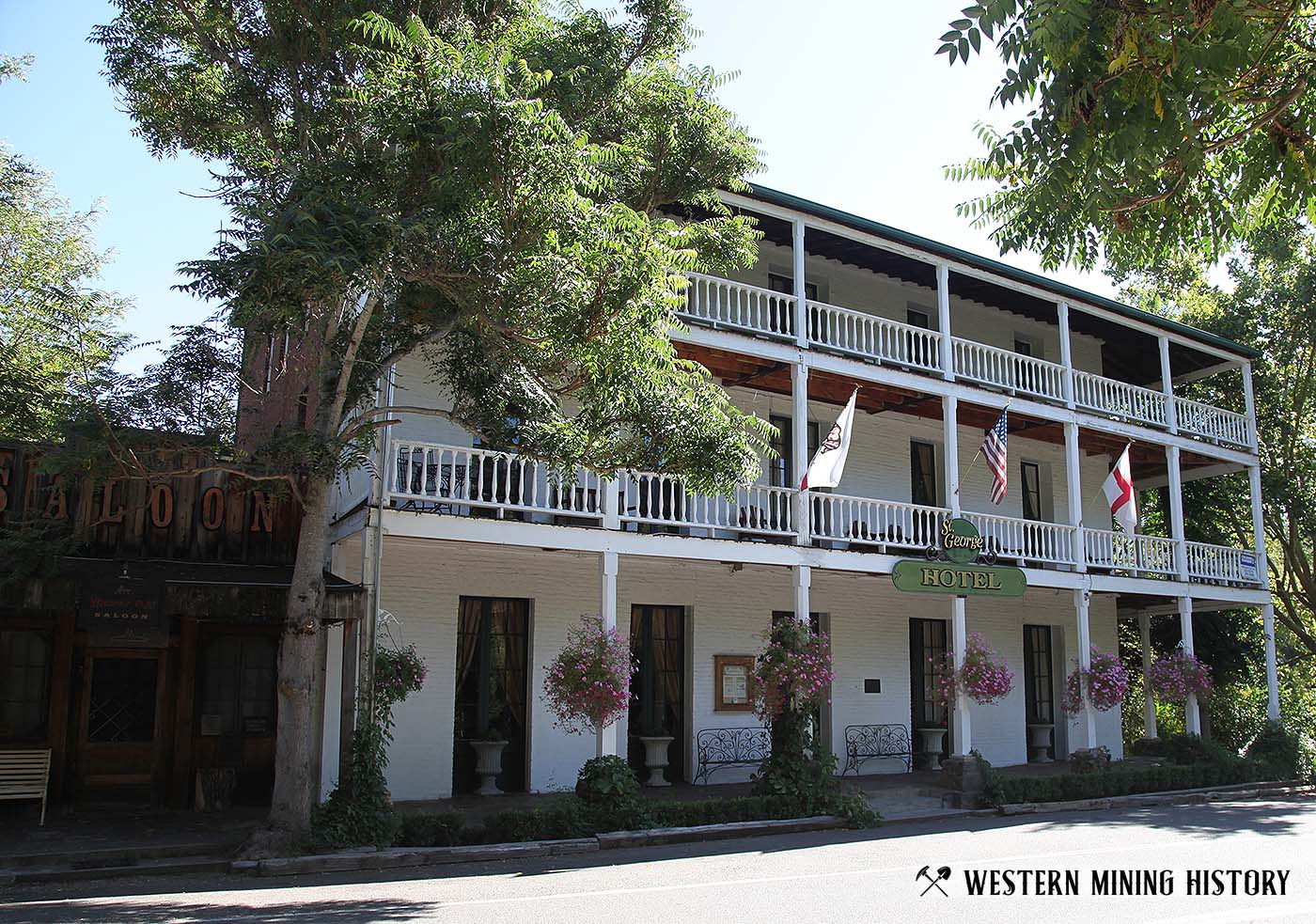
St. George Hotel (1863) - Originally frame-built circa 1852 by John Meyers and named Eureka House (a boarding house). Burned and rebuilt 3 times; final and existing rebuild was with brick. Different names with each rebuild - Empire Hotel, George Hotel (named for B.F. George) and St. George Hotel.
Site of historical observatory - Volcano, California
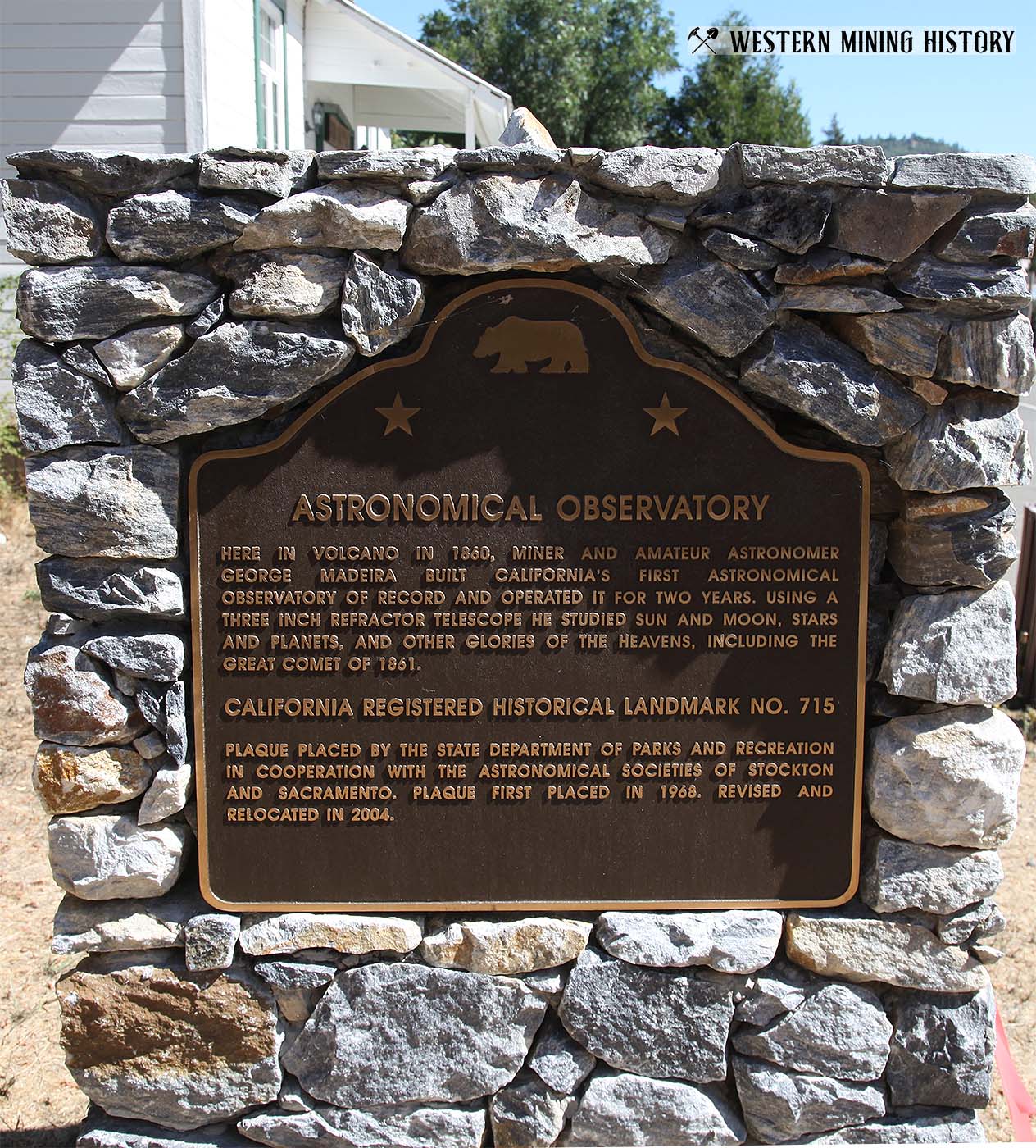
Astronomical Observatory
Here in volcano in 1860, miner and amateur astronomer George Madeira built California's first astronomical observatory of record and operated it for two years. Using a three inch refractor telescope he studied sun and moon, stars and planets, and other glories of the heavens, including the great comet of 1861.
California registered historical landmark no. 715.
Old Abe Cannon - Volcano, California
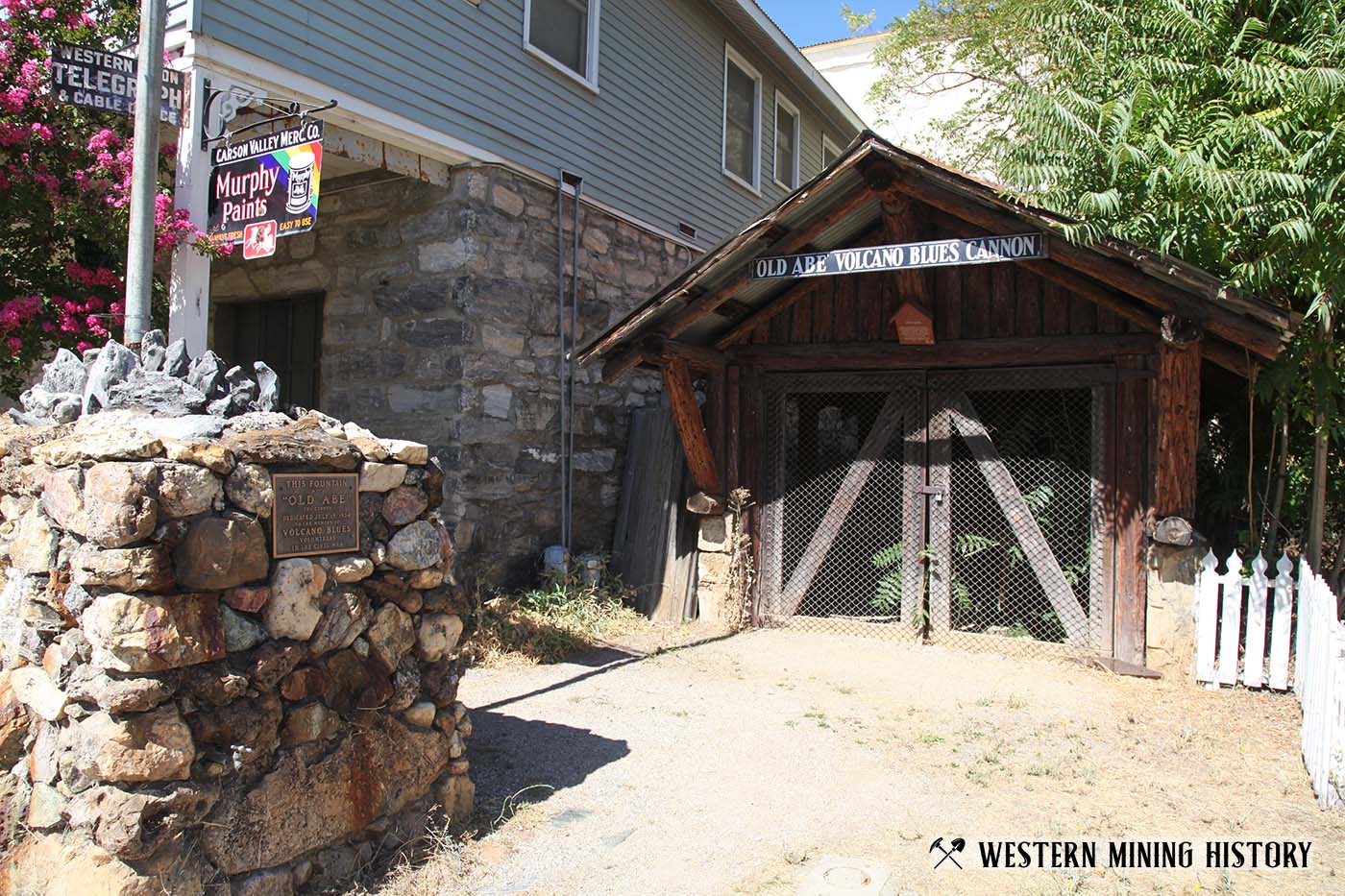
During the Civil War, Volcano's gold served the Union - the Volcano Blues smuggled the cannon "Old Abe" to intimidate rebel sympathizers. The cannon was cast by Cyrus Alger & Co. in Boston in 1837 and is the first of two 6-pounders made on the same day to be stamped with serial number 4. The cannon was never fired. The other cannon still survives at Shiloh Battlefield and is called "Shiloh Sam". Abe is the only cannon of that age in the U.S. still on a nineteenth century wooden carriage, and has had an interesting history all on its own.
